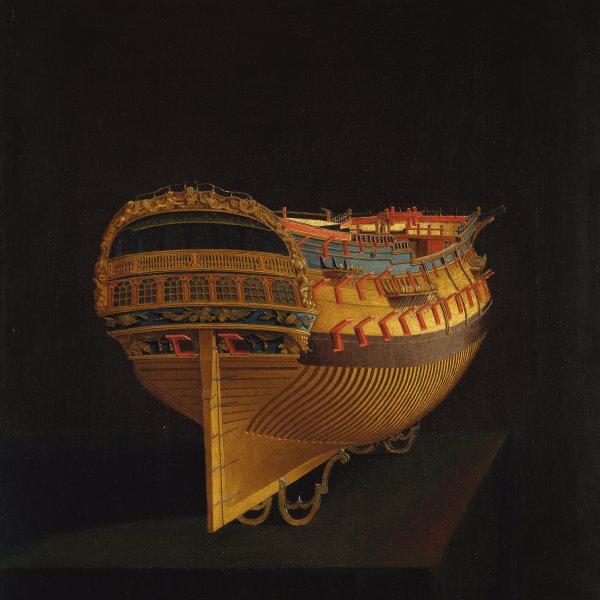Group Portrait of Sir Elijah and Lady Impey
In the early 1770s Johann Zoffany was commissioned by Queen Charlotte to paint the Tribuna of the Uffizi. The painter left for Florence in 1772 and returned eight years later in 1779. During the lengthy period that he remained in Italy at work on the painting the artistic situation in England had changed. On his return it was evident that the genre of the “conversation piece” that had brought him success and fame was no longer fashionable. This situation obliged Zoffany to find new clients and he consequently set out for India in 1783. There he worked for high ranking officials of the Crown and for the large British community, painting individual and group portraits and using the artistic formulas that had brought him success in the past. At this period Zoffany’s work appears rather stale and lacking in inspiration, his palette became more limited and his compositions are more complex due to the large number of figures involved. Zoffany’s Indian adventure concluded in 1789 when he returned to England, having considerably improved his financial situation.
The present portrait depicts Sir Elijah and Lady Impey and their three children. The canvas must have been painted shortly after Zoffany’s arrival in India on 15 September 1783 as the Impey family returned to Britain in December of that year. The composition reveals how the artist adapted his group portraits set in interiors to the new context in which he found himself and Zoffany continued to use a relaxed, informal and family mood. In the present case we see Sir Elijah and his wife attending a small celebration in which one of their sons, wearing Hindu dress, dances to music. The father encourages the small boy by clapping while Lady Impey is seated on the left with another of their sons leaning over her shoulder and looking at the principal scene, standing on a small stool to get a better view. The episode offered Zoffany the chance to depict the exotic retinue around the Impey family, comprising musicians arranged in line in the background, the household servants, one holding up a silver dish behind Sir Elijah, and the native nannies or ayahs seated on the ground in front of the musicians, one holding the third son on her lap.
Sir Elijah Impey was born on 13 June 1732 at Butterwick House. On 18 January 1768 he married Mary, son of Sir John Reade. Impey was appointed Chief Justice to the Supreme Court in Calcutta, an institution founded in 1773 and which he joined in 1775. It would seem that professional jealousy led him to exceed his functions and he also executed the function of President of the Central Court without the necessary permission from London. His conduct was reported and he was obliged to return to Britain to give an account of his actions.
The present canvas, which was displayed at Daylesford House, the UK residence of Baron and Baroness Thyssen-Bornemisza, entered the Collection in 1986. The canvas had belonged to Sir Elijah Impey’s heirs until it was auctioned in London that year.
Mar Borobia












